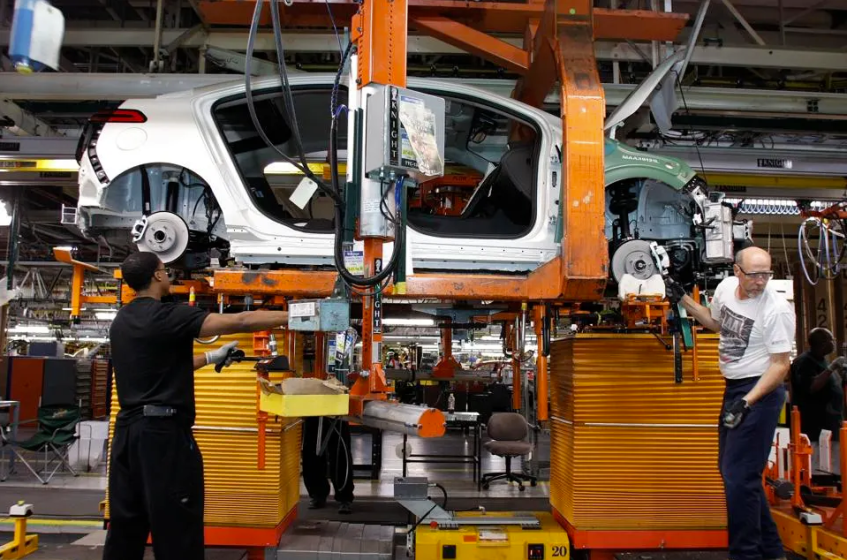
Trump’s High Tariffs Backfire on the North American Automotive Industry
Dr Stephen Chiu
12 March 2025
US president Donald Trump recently announced significantly raising import tariffs on Canadian and Mexican products, with a surge as high as 25% on vehicles and automotive parts. Despite being aimed at relocating American manufacturing industries and minimizing trade deficits, this could actually trigger a series of profound negative impacts.
Below is an analysis of how this policy will undermine economic cooperation and productivity in North America, particularly within the automotive industry.
Cross-border interconnected industrial chains among US, Canada, and Mexico
The North American auto industry chain forms a highly-integrated, multinational supply system that fully leverages the resource and workforce advantages of America, Canada, and Mexico. Let’s take Ford’s popular F-150 pickup truck as an example of the massive cross-border transportation of parts and components involved in the automotive manufacturing process. This demonstrates the industrial coordination under the North American free-trade system.
Engines from America and Canada: Some engines, such as EcoBoost V6, are manufactured in plants in Michigan, US while the rest, e.g. V8, are manufactured in factories in Windsor, Canada. These products are then transported to the US for assembly.
Transmission system from America and Mexico: the 10-speed automatic transmission system for the F-150 is produced in plants in Michigan, US and Chihuahua, Mexico. Leveraging Mexico’s cost-efficient labour force, a portion of the automotive components are transported to the US for assembly.
Automotive body parts from Mexico: Metal finishing in Mexico is cost-effective and technologically mature. The completed aluminium body panels are also transported to the US for final assembly.
Electronic components from Canada and Mexico: High-tech electronic control units are sourced from Canada while labour-intensive wire harnesses are made in Mexico.
Final assembly in America: Final assembly for F-150 is conducted in factories in Dearborn, Michigan and Kansas City, Missouri.
Throughout the entire manufacturing process, parts and components are transported across borders multiple times. For instance, under special circumstances, parts and components manufactured in Mexico may be shipped to Canada for further processing. Such cross-border movements highlight the substantial degree of coordination within North American automotive industry chains.
As a result of the tax cumulative effect of this cross-border manufacturing approach, the tax burden on manufacturers is actually much higher than the Trump administration’s 25% tariff may suggest on the surface. Suppose the components are manufactured in the US at a cost of US$10. They are then delivered to Mexico for processing at an additional cost of US$10 before being returned to the US for final assembly. The tariff is US$5 at a 25% tax rate. Since the processing vale in Mexico is US$10, the tariff amounts to 50% of the processing cost in Mexico. Clearly, while the tariff rate is set at 25%, the actual cost burden across different parts of the supply chain is much heavier, especially for the labour-intensive operators in Mexico.
The above impact will not only increase the overall manufacturing cost but will also pose a challenge to the North American free-trade cooperation system. Enterprises are compelled to reconfigure their supply chain layouts, compromising overall economic efficiency.
Economies of scale hindered by high tariffs
From an economic perspective, the tariff policy will push up manufacturing costs in the two following aspects. First, direct costs: tariffs acting as an additional expense directly escalate the costs of manufacturing parts and components. For example, wire harnesses or transmission systems made in Mexico will become more expensive as a result of the tariffs. These additional costs will eventually be reflected in the sales price.
Second, indirect costs: New Trade Theory, pioneered by Paul Krugman, emphasizes that one of the advantages of international trade is that it enables companies to fully leverage economies of scale, i.e. the unit cost of production diminishes with expanding output. However, the tariff policy will lead to the automotive industry’s scale of production shrinking. As rising prices of components suppress demand, overall production will dwindle as a result. The average production costs of enterprises will shoot up as output plummets, further weakening their competitiveness.
In the aforementioned Ford Motor case, if the company cannot afford the tariffs, it will not be able to import enough low-cost components from Mexican plants, causing America’s manufacturing capacity to drop. This means that Ford will no longer be able to manufacture best-selling models like the F-150 at low costs and will, therefore, struggle to maintain its price competitiveness in the market.
Talk of American manufacturing chains returning just wishful thinking
A core objective of Trump’s tariff policy is to bring manufacturing back to the US. Unfortunately, this objective is neither practical nor economically efficient.
One formidable obstacle to restoring a large number of jobs back to the US is the inadequate labour supply. Given the historically low unemployment rate and current shortage of skilled workers for technical positions in manufacturing, any attempt to move all cross-border production chains to America will lead to manpower shortages in other industries, further driving up wages and inflation rates.
Moreover, labour costs in the US are much higher compared with countries like Mexico. Even if enterprises establish factories on American soil, they would be unable to replicate the same low-cost operations achievable in Mexico. This will severely weaken the competitiveness of American automobiles in markets worldwide.
The international division of labour in manufacturing lies in professionalism and maximizing efficiency. While Mexico specializes in the production of labour-intensive parts and components, Canada and the US focus on high value-added research and final assembly. Such a division of labour approach has equipped the North American automotive industry with global competitiveness. Nevertheless, if all production activities were concentrated in the US, companies would not only lose the advantages of economies of scale, but productivity would also sharply decline, ultimately dealing a blow to economic coordination throughout the North American region.
The lesson from cutting off one’s nose to spite one’s face
Trump’s tariff policy serves as a reminder of the Smoot-Hawley Tariff Act from the last century. Aimed at protecting American agriculture and industries, the Act was passed in 1930 and imposed high tariffs on over 20,000 imported goods. Despite its implementation, the legislature not only failed to achieve its purpose but also triggered retaliatory tariffs from other countries, significantly slashing international trade and further exacerbating the Great Depression.
The ultimate failure of the Act taught us a valuable lesson: unilaterally raising tariffs will not merely harm the domestic economy but also compromise the stability of the global economic system. Trump’s tariff policy may well repeat the same mistakes, with a heavy impact on the overall economic coordination in the North American free-trade region, especially when Canada and Mexico take punitive measures.
While Trump’s policy to levy tariffs on imports from Canada and Mexico seeks to bring manufacturing jobs back to the country, it completely underestimates the cumulative burden on producers, not to mention the production cost hikes due to direct costs and the loss of economies of scale. The writing has long been on the wall regarding the Smoot-Hawley Tariff Act: without due consideration for the complexity of the global supply chains, the tariff policy is set to inflict irreparable damage on both the domestic economy and the international trade system.
Given the advanced development of globalization today, international trade collaboration remains crucial for enhancing productivity and economic growth. The US should re-examine its trade policy to avoid making the wrong moves again and to maintain the competitiveness and resilience of the North American automotive industry by deepening regional cooperation.






